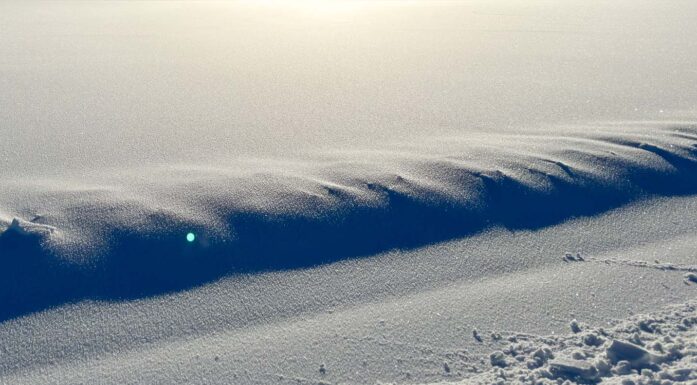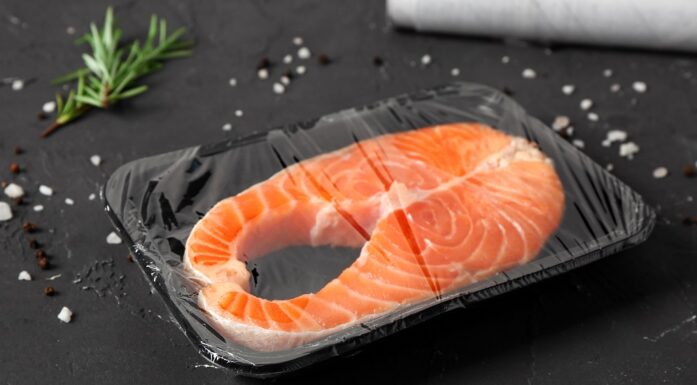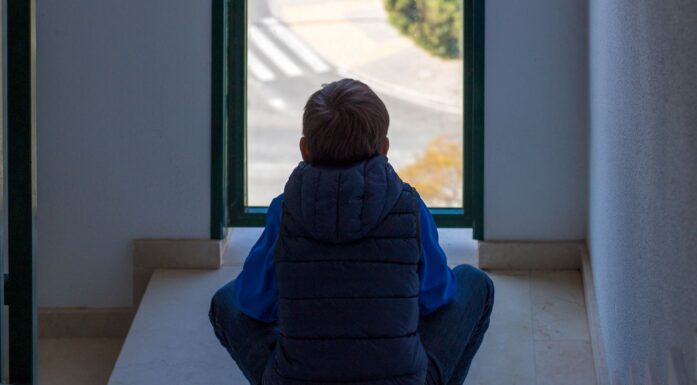Luxury goods
This boy belongs to a minority: He has access to clean, plentiful water, straight from the tap.
There is an exclusive health food restaurant in New York City where you can only get water to drink. In return, you can choose from 150 different brands of bottled water. The most expensive is filled with water that has drained from a Tibetan glacier.
In other parts of the world, millions of people suffer because they have no water, or because the water they have is contaminated.
Water scarcity is a constant source of conflict, and could easily become the biggest threat to world order as we know it today. Economists and social scientists are already talking about how the scarcity of water could have a far greater impact than running out of oil. The battle over clean water could escalate conflicts worldwide, further broadening the global gap between rich and poor and creating new class divisions locally.
Can the challenge of providing enough clean water be solved by technology?
Increased pressure on cities
Among those who see technology as the answer to the global water crisis is an international expert on water and wastewater engineering, Professor Hallvard Ødegaard, from the Norwegian University of Science and Technology’s Department of Hydraulic and Environmental Engineering.
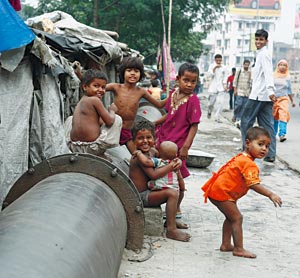
Megatrouble in megacities
Here children play at a water pipeline in Kolkata, an Indian city with more than 13 million inhabitants. These cities face the most severe water problems in the future. There are three ways to bring water to the world’s megacities: importing freshwater from distant sources, desalination of seawater, and the reuse of effluent. All of these methods require significant improvements in water treatment technology.
Photo: Samfoto
He points out four reasons for the world’s water crisis: Most of the water found on the planet is salt. The Earth is undergoing major climate change. Population growth is rapidly increasing. And people all over the world are moving to megacities and increasing pressure on water resources.
Ødegaard believes that urbanization represents the biggest challenge, partly because of the lack of sufficient freshwater sources for growing populations, but also because the infrastructure (supply network) in large cities is falling apart, and will be costly to rebuild.
Ødegaard sees three possible solutions to meet the water demand in major cities: “You can fetch and carry water over a long distance. You could desalinize seawater. Or you can purify and recycle wastewater. And no matter which solution you choose, the water supply infrastructure must be far better organized than it is today”, he says.
Ødegaard has outlined a solution for recycling water, called the NTNU concept. You’ll hear more about that later.
Climate, climate, climate
Professor Sveinung Sægrov at NTNU also sees migration and urbanization as major challenges. Like Ødegaard, Sægrov believes that technology can solve many of the world’s water-related problems – provided it is combined with an understanding of the social sciences.
He is particularly concerned about climate change, and believes that a warmer climate will greatly affect water resources in the future. He thinks that we can expect more extreme weather, with prolonged droughts and heavy rainfall with subsequent heavy flooding.
Floods damage both buildings and infrastructure and therefore cause serious pollu-tion. In this way, both abnormal drought and excessive rainfall help to increase the pressure on clean, fresh water. Other researchers have pointed out that if climate change contributes to warmer water, we’ll face yet another pollution problem. Some countries are home to many large, deep groundwater reservoirs.
Deep groundwater has its own natural barrier to impurities: Differences in temperature and density rarely allow contamination on the surface to make its way to deep groundwater. If the groundwater gets warmer, however, this natural barrier disappears.
Spilled water
Sægrov is an expert in supply networks and distribution systems. This area of study also provides solutions to another water-related problem: leaks from bad water pipes. A large percentage of the world’s mains network is getting very old and needs extensive repairs.
“On average we can expect that 30 per cent of water that goes into a pipe disappears due to leakage. In a situation of increasing scarcity, it is clear that the world cannot afford this. We have to plug the leaks”, the professor says.
The catch is that replacing water pipes involves an enormous amount of work, and consequently is very expensive. As an example, Sægrov says it costs about NOK 5 million per kilometre to replace water pipes in Norwegian cities.
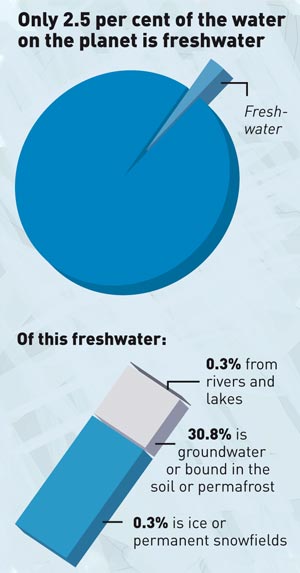
Salty water abounds
Water covers two-thirds of the earth, but most of it is salt water. Only 0.3 per cent is readily available freshwater.
Illustration: Mads Nordtvedt/NTNU Info
Maps, knowledge and spies
When Gemini was visiting, Sægrov had just said goodbye to a representative from the Chinese city of Chonqing. The city has a population of 35 million, and is continuing to grow. It already has major problems getting enough clean drinking water, and is also struggling with pollution that is ruining the city’s water sources. It’s a situation that is typical of many of the major cities in that part of the world.
NTNU and SINTEF water researchers have helped develop an analysis tool that facilitates planning of maintenance and repair of water networks. The tool is called CARE-W, after an EU project with the same name. The name is an abbreviation for Computer Aided Rehabilitation of Water networks.
“The first step is to get an overview of the situation. For this you need good maps that show where the mains are located. And we need to know the dimensions, materials and ages of the pipes, as well as information about the soil substrate. With this information we can calculate the risk of failure, and facilitate the maintenance and repair work”, explains Sægrov. He adds that the tool can be used anywhere where there are networks, and that many Norwegian municipalities have started using it.
Another innovation makes it possible to determine the condition of water pipes without digging them up.
This approach involves sending a scanner through pipes. The pipe scanner sends acoustic pulses (sound signals) to the pipe’s walls. The frequency of the signals makes it possible to calculate the pipe thickness and detect weak points. SINTEF has been involved in developing this tool for the water and wastewater industry.
Breivoll Inspection Technologies won an innovation award in 2007 from Tekna, the Norwegian Society of Graduate Technical and Scientific Professionals, for the pipe scanner, coming out on top of larger competitors such as Rolls Royce and StatoilHydro.
From 200 to 20 litres
Water supply and sewerage systems will be key elements in urban planning for the future. Professor Ødegaard thinks that the trend will be towards more decentralized solutions – where new urban development will to a greater extent strive to become self-sufficient in terms of freshwater supplies.
This will be achieved through extensive purification, recycling and reclamation of used water. Traditional water and drainage systems are based on a pipeline that brings in pure water, and a pipeline that takes away the sewage.
We use the pure water for all kinds of different purposes: from preparing food and drink, for all kinds of washing and cleaning, and to flush the toilet.
About 20 per cent of water is used for drinking, cooking and personal hygiene, which means it must be highly purified and of the highest quality. But you do need the quality requirements to be as high for the remaining 80 per cent?
Together with his colleague Per Kristian Vestre at the NTNU Technology Transfer Office (TTO), Ødegaard has developed what is called the NTNU concept. This is an approach to sustainable water use in large cities, based on purification and reuse in decentralized systems. It may include groups of houses, hotels, various institutions or commercial buildings. The goal is to reduce water consumption by 90 per cent.
In western countries, the daily average consumption of water amounts to more than 200 litres per person. With the NTNU concept, the consumption of new, clean water can be reduced to about 20 litres per day, or the equivalent of a couple of water buckets. The remainder can be taken from cleaned and recycled water and from collected rainwater. High quality water can be brought to a house in a pipe, pumped up from the ground or delivered via tanker truck.
Four water taps
This approach requires water to be divided up into at least three different levels of quality supplied by four water taps. The best quality would be reserved for drinking, making food, and personal hygiene, while the next lower quality would be used for washing dishes and clothes and cleaning house. The lowest quality water would be used outside for washing cars and watering gardens. This quality would also be used to flush toilets.
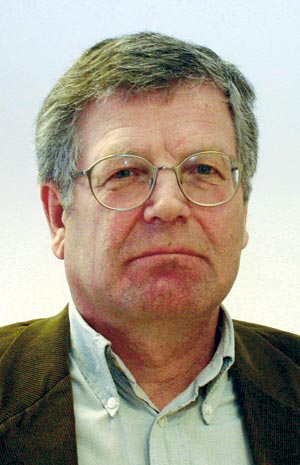
A plan for reuse
It should be possible to reduce a household’s demand for clean, fresh water by 90 per cent, according to Professor Hallvard Ødegaard. He has developed a sustainable solution that can provide water to large cities, using purification and reuse. Photo: Synnøve Ressem/NTNU Info
Used water from the two highest quality levels would be cleaned and collected in a reservoir, where nature’s self-cleaning processes can occur. The reservoir would also work as storage to even out water supplies. Water that has been used outside will naturally drain away and be cleansed by the soil, and eventually can be collected in a reservoir.
Sewage from the toilet would be completely taken out of the recycling loop. It should total about 20 litres – about the same amount as the clean water that was supplied to the system in the first place. The organic matter from the toilet can be separated and treated hygienically so that it can be reused as fertilizer.
The water that isn’t provided from outside the system is returned after new treatment (depending upon the quality) to users – but from smaller reservoirs that are dug near individual houses, or larger reservoirs that could supply an entire neighbourhood.
A bacterial Christmas feast
“All water can be made pure, it’s just a question of just what we are willing to pay. I usually say that the more dollar bills we filter through the system, the cleaner the result. The key is to find a balance between what is technically possible, and the cost”, says Professor Tor Ove Leiknes at NTNU’s Department of Hydraulic and Environmental Engineering.
His specialty is membrane filtration. The membrane acts like a very fine strainer, where the holes are so dense that only clean water can get through. The unwanted particles are left on the outside. The “strainer” can be so dense that the holes are invisible to the eye.
Membranes such as these are classified according to the size they are able to filter out: micro filter, ultra filter and nano filter. In other words: very small, much smaller and exceedingly tiny – a nanometre is one billionth of a metre. For comparison, the size of a polio virus is around 25–30 nanometres.
When membrane technology was first used in water purification in the 1980s, there were many who believed that it would come to replace all the old technologies. Eventually it turned out that a combination of old and new methods in many cases provides the best results.
The combination of membrane filtration and a bioreactor is one such example that is called a membrane bioreactor, or MBR. A bio-reactor is, as the name suggests, a biological cleaning method that uses bacteria to remove organic material and unwanted substances from water, and membranes to remove the bacteria.
“I compare the process to a Christmas feast, where there is food in abundance and a variety of dishes. The bacteria are the people who swarm around the table and gobble down a little of everything. Some like one thing, others prefer something else, but everyone eats everything up until it’s all is gone and they are full. At that stage we send the water through a membrane. The clean water goes through, while the fat bacteria are left on the outside and become what we call sludge”, explains Leiknes.
Need for packaged solutions
Two other treatment methods of interest are biochemical purification and UV purification. Biochemical purification combines biological and chemical methods. UV purification uses UV rays on bacteria, with the result that they are paralyzed and cannot reproduce. UV disinfection will destroy bacteria and other organisms that chlorine does not destroy, and is used by many Norwegian municipalities in combination with a chlorination plant.
Leiknes says that one of the challenges of water purification research is to put together multiple solutions in customized packages so that the technology can be optimized. The combination is determined by the type of contamination, and what the water is used for. For example, two different substances require two different treatment methods, and drinking water must be cleaned to a higher standard than non-potable water.
Recycling and reuse of wastewater is technically and economically possible. Bioreactor membrane technology (MBR) is considered to be the best of the available solutions.
NTNU’s Department of Hydraulic and Environmental Engineering is coordinating the EU project EUROMBRA, which is focused on the development and application of MBR technology for the purification of municipal wastewater. The project has a budget of just over 4 million euro.
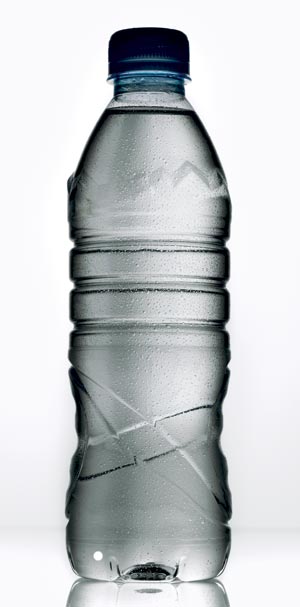
Clean water is hard
It is technically possible to completely remove all the substances and particles from water to get ultra-pure (distilled) water. But distilled water tastes bad. For health reasons it is not recommended for people to drink distilled water, since it is stripped of minerals that the body needs. But distilled water can be remineralized to return it to a more natural state.
Photo: © I Dream Stock
Tailor-made taste
Water absorbs all sorts of substances from nature. Therefore, it can contain varying amounts and types of minerals and other substances, all of which combine to make differences in taste.
“It is technically possible to completely remove all the substances and particles, and get ultra-pure (distilled) water. I have tasted this kind of water. It was terrible”, says Leiknes.
“There are arguments for and against ultra-pure water for drinking. It’s rarely recommended, because of health reasons. Ultra-pure water lacks essential minerals that the body needs in addition to those we get in food”, he says.
If contaminated water is cleaned to this ultra-pure level, it is possible to remineralize it, so that the water has a more natural composition and taste. This is what makes it possible for multinational bottled water manufacturers to guarantee that their brand has the same mineral content and taste, no matter where in the world it is made.
The process is also used in countries with scarce water resources and little access to clean freshwater. One example is the city of Singapore, with a population of one million. They have built huge water plants that purify wastewater so that it can be used for all sorts of purposes.
The purified water can be given a composition that is tailored to customers. Industry takes process water from these kinds of plants, because it can be delivered with features that fit a business’s needs, while also being cheaper than regular tap water.
Too much and too little
“We have enough water. The problem is that it is not located where we need it, and when we need it”, says Ånund Killingtveit. He is a professor at NTNU’s Department of Hydraulic and Environmental Engineering, and is a specialist in resource management.
Killingtveit is referring to the variation between rainy and dry seasons, climatic variations such as floods and droughts, and the differences in ability to handle such natural disasters.
Once again, it’s money that is decisive, more than the available knowledge and technology.
“Many poor countries have long dry periods, but also periods of heavy rain. The problem is that they don’t have the capacity to store the water from rainy periods. They could come a long way by building reservoirs, but often these countries have neither the knowledge or money for this”, says Killingtveit as an example.
The most important challenge, particularly in the third world, is to provide enough clean water for households. This appears to be quite simple: There are reasonable approaches to the problem, and the amount of water needed is not so great. But third world governments may not have the money to provide clean water, or they may not necessarily see it as a priority.
Although only two per cent of the world’s water consumption is for domestic consumption, it can be challenging to obtain high quality water and distribute it to everyone who needs it. The UN has estimated that 1.2 billion people still lack adequate drinking water.
90 per cent for food
Between 80 and 90 per cent of all freshwater is used for food production, primarily for irrigation. Herein lies the source of many conflicts, and the really extensive challenges.
“We can, if necessary, provide drinking water by using treatment techniques and desalinating seawater. But this technology is too expensive to use for the vast amounts of water we need to maintain and increase world food production”, Kvillingtveit explains.
There are already large populations that do not have enough food. The problem could probably be fixed by redistributing resources. But forecasts show that it soon may be impossible to feed the entire world’s population with food production at current levels. The reason is the predicted population growth and increasing wealth in populous nations like China and India.
World population is expected to increase from about six billion today to nine billion in the next 50 years.
When people become wealthier, their consumption and eating habits change. It’s a trend that can be seen in China, where people have started to eat less rice and more meat. A shift from eating cereal to meat leads to a sharp increase in water consumption, because we first need to grow feed for animals. Killingtveit suggests several solutions that are more or less feasible.
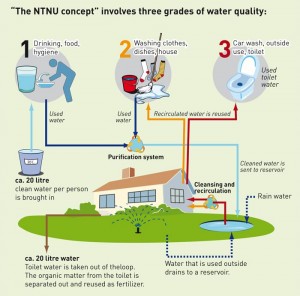
20 litres of freshwater is enough
A person uses about 200 litres of water a day. Only 10 per cent is used for drinking, food and personal hygiene. The NTNU concept involves cleaning and reusing much of this water. Higher quality used water is collected in a pond, which also collects rainwater and water that is used outdoors, such as for car washing and irrigation. Another advantage of the system is its low maintenance. The replacement of pipes in traditional water and sewage systems is complicated and enormously expensive.
Illustration: Mads Nordtvedt/NTNU Info
Relocate land or water?
The simplest, yet most difficult thing is to move food production to the places that are best suited to produce it. But to make one country completely dependent on another for food suggests a greater confidence in international relations than most people – or countries – might have. Many states have had bitter experiences with their neighbours throughout history.
A more realistic option is to build pipelines where the water is, and move it to where it’s needed. This requires carrying it over long distances. A famous example of such a solution is southern California. The area was originally very dry, but has long been among America’s richest agricultural regions. Here water is transported by pipe for more than 700 kilometres from the north and east.
China plans to build canals over huge distances, from their abundant water sources in the south, to drier areas in the north, where most people live. The world’s longest waterway, constructed by man, is already in China.
This is the 2000-year-old Grand Canal, also called the Big Canal. It is over 1800 kilometres long and 40 metres wide at its broadest. The canal connects Beijing in northern China with the fertile area around the Changjiang River. The elevation difference over the length of the canal is 42 metres. The new canal system that is planned will be at least as long, but will draw water from higher up the rivers.
Bitter conflict
From a technical standpoint, it is possible now to transport water from one area to another. What can be difficult, however, is determining who owns the water, or coming to an agreement over who should get it. Killingtveit has several examples of these kinds of conflicts.
Among the best known is the Aral Sea, which as late as 1960 was the world’s fifth largest lake. The Soviet Union then decided to expand its agriculture and especially cotton production in the dry desert areas in what is now Uzbekistan, Turkmenistan and Kazakhstan.
The Aral Sea receives water from two rivers, the Amu Darya and Syr Darya, and has no outlet. When the rivers were diverted into gigantic irrigation canals, the volume of water that flowed into the sea was dramatically reduced. The sea began to shrink and was gradually transformed into a stinking poisoned puddle.
This has resulted in bitter conflict between Uzbekistan, Kazakhstan and Turkmenistan.
“It is not possible just to put the rivers back either, because there are new settlements along the new river courses”, says the professor.
Water is power
Another conflict area is the Nile, which is still governed by British law from the colonial era. The water rights there go to powerful states such as Sudan and Egypt, which consume most of the water, at the expense of agriculture in Ethiopia, Uganda and Tanzania.
Israel’s water problems are also well known, where food production is a major source of income – and dependent on major water resources. Despite a huge desalination plant and groundwater overdrafts, the country is entirely dependent on the water supply from Lake Tiberius. Water resources play a significant role in the Middle East conflict. This is one reason for the strict control of groundwater resources on the West Bank.
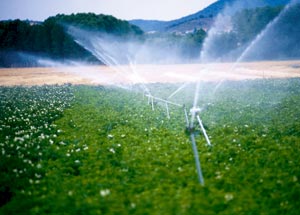
Increased food shortages
Between 80 and 90 per cent of all freshwater is used in food production. This scarce resource will be the source of many conflicts, and this is where we find some of the greatest challenges.
Photo: Pixtal (RF)
Whoever controls water, has power, whether on a large or small scale. A few years ago the author was on a visit to one of South Africa’s townships, outside Durban – a slum area that was built of waste materials and other junk.
Water had to be retrieved from a well that was located on the outskirts of the slum. Somehow, one smart guy had managed to secure control of the well. It gave him the power to determine who was able to use the water, and gave him many benefits.
From this perspective it can be difficult to see an end to the world’s water and food crisis. Resource management specialist Killingtveit is not exceedingly optimistic. But he believes that where there are technically feasible options for change, there is hope. That leaves “only” the barriers posed by money and political will.
Security plans
We like to think that our drinking water is crystal clear and as pure as a mountain stream, and we shrink from the thought of drinking purified sewage.
Then you should know that water from the kitchen tap can be of very poor quality.
In the next version of the EU drinking water directive – to which Norway must also adhere – there is work under way to include “WaterSafety Plans”. These plans would put us ahead in terms of risk: In addition to requirements to measure the quality of the water produced by a plant, officials would also be required to undertake a thorough analysis of potential risks/adverse events and consequences for the entire water supply system – from source and basin through water treatment and distribution, right to the consumer’s tap. In short: What could happen, and what would the consequences be?
This risk and vulnerability analysis would then be followed by a process that identifies what are called critical control points. These are points in the water supply system that need special monitoring to prevent adverse happenings.
“Many water works in Norway are well underway with their risk and vulnerability analysis, and some have already created these plans. But there’s still a great deal to be done with regard to establishing and monitoring critical control points”, says Bjørnar Eikebrokk, research director at SINTEF Water and Environment.
He is concerned that tight budgets will force many municipalities to reduce operations and maintenance work.
Education for the world
SINTEF and NTNU have a strong reputation both nationally and internationally for their water and environmental engineering education and research. Students from around the world eagerly seek places at the Department of Hydraulic and Environmental Engineering to take master’s and PhD degrees.
It’s part of a long-term trend. This year, more than half of the master’s students are foreigners, representing 20 different countries. Almost 80 per cent of doctoral candidates are foreigners from 15 different countries.
“The number could be tripled if more scholarships were available”, says department head Helge Brattebø.
He has several explanations about why Trondheim has become so attractive: “It started 20 years ago, when Norway was the world leader in hydropower, with skills that were developed at our institute. This drew students from all corners of the world, especially from developing countries. Good testimonials and word of mouth ensured an increasing number of applicants. Many of the first students to arrive are now in senior positions in their home country. This is also true for the water and wastewater programmes, where talented students and fellows have been educated at the department since the 1980s, and where our researchers have been very active internationally.
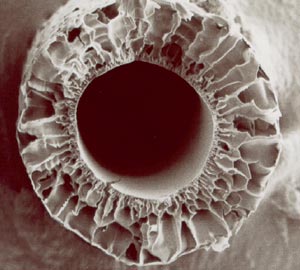
Nanotubes in a membrane filter
The membrane acts as a very fine strainer, where the holes are so dense that only clean water can pass through and unwanted particles are left on the outside. “The strainer” can be so dense that the holes are invisible to the eye. Such membranes are classified according to the size they are able to filter out: micro filter, ultra filter and nano filter. That is very small, even smaller and extremely tiny.
Photo: Membrane News
People notice, and it helps to keep interest alive”, Brattebø says. He points out the newest manifestation of this expertise: an international programme for the study of industrial ecology. It was created three years ago, as an interdisciplinary collaboration at NTNU, and educates students with special expertise in environmental systems analysis in industrial value chains.
“NTNU was the first university in the world that could offer a complete range of educational opportunities in industrial ecology”, Brattebø added.
National headache
One downside of this otherwise happy situation is that the department is struggling to recruit Norwegian students, and, consequently, Norwegian doctoral fellows. Norwegian students are apparently not particularly interested in hydroelectric power, water and sewage. Perhaps it is because Norwegians take energy, clean water and sanitation for granted, and don’t see the major challenges inherent in these subjects?
Recruitment problems have consequences far beyond NTNU.
“Today, we rely on the many individuals who were educated in the 1960s and 1970s. Soon they will retire and must be replaced.
We already lack specialists in both water resources engineering and water and wastewater engineering. Earlier this year, there were 20 vacant positions in Oslo in water and wastewater engineering. When cities begin to lack expertise in these areas, we have a huge problem”, notes Brattebø.
Light at the end of the tunnel
But there is light at the end of the tunnel. Interest in hydroelectric power had also been low for a while, but now interest is on the rise. The department is working with both the hydropower industry and the ministry, in part to revitalize the water resources laboratory.
There is a need to maintain and strengthen academic expertise for the benefit of both the operation and efficiency of existing facilities, including development and operation of small hydropower plants, and last but not least, dam safety. Many dams are getting old. They need to be checked for safety, and they need maintenance.
In other words, there’s no lack of challenges for people who want to make sure that the little boy on his kitchen counter will continue to have enough water, and clean water, in the tap.
By Synnøve Ressem

